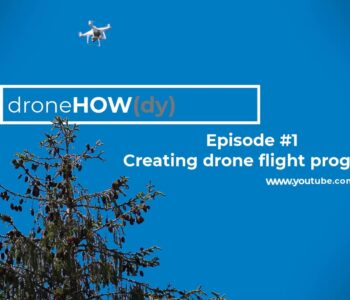
Introduction
I have been working (teaching and research) in Tallinn University of Technology (TalTech) since 2003. From the same time I have been involved in conducting various learning subjects. My professional background started with subjects of hydraulics in terms of pipe networks that mainly focuses on pipe network modelling itself but also sharing ideas from building infrastructure discipline models (incl. building information modelling) in where hydraulic analysis can be carried out and results carried back to decision makers. From 2004 I have been working with the state-of-the-art building information modelling tools as a professional trainer, consultant and therefore have great teaching skills in post graduate sector as well as having tight relationships with various companies that are leading the building information modelling practices in private and municipal sector.
The practice from private sector has helped me to start lecturing also building information modelling (BIM) subjects (spring 2016). First subjects in terms of BIM fell into buildings (vertical BIM) category. My focus in vertical BIM category is engineering systems (mechanical, electrical and plumbing). Mainly because knowing hydraulic principles helped me to see the development of 3D pipe design and considering the assumptions that came from building energy analysis. Therefore, while teaching vertical BIM subjects, my general teaching workflow starts from preliminary design concepts and conducting building energy analysis that are bridging the gap to make right decisions for detailed design. From 2021 the vertical BIM course is also given to Tartu College students (as an e-learning course).
While being involved in vertical BIM for quite long time, the next logical step was to move into linear BIM (infrastructure, roads, and utility network). At the same time, in spring 2016, I had a great opportunity to make an introductory BIM course for civil engineering students at TalTech. The focus of tools was different and the scale of BIM as well. But the main BIM principles of course are the same. Again, the interest about BIM for infrastructure came from private sector from where I do have practice for more than 15 years (incl. international companies). It is clear that BIM for infrastructure is using vertical BIM at the same time (civil constructions, bridges, etc.) and my strong background in vertical BIM has helped to manage and keep going both sides.
Recent focusing into BIM for infrastructure has helped to combine my knowledge in hydraulic network and infrastructure models where model-based connected workflows are main principles for successful project delivery, execution and maintenance. The clear indicator about my competency in that field was also invitation to carry out BIM for infrastructure full course in the TTK University of Applied Science (spring 2017 – spring 2020). The full “BIM for infrastructure” course in TalTech started from 2019 (once study program got updated and the new course included into the study program).
In terms of lecturing, I have been a great enthusiast propagating active learning methods and therefore my main subjects do all have a full e-course available that can be independently used during lecturing semester as well as for self-improvement (openly available for guest users). Each semester those courses are taken through open university as well. My e-learning enthusiasm has given me a possibility to be an Education Technology Officer in TalTech Office of Academic Affairs and to create the “train the trainers” type of e-learning courses in where Moodle is taught for our teaching staff (courses available in Estonian and in English). My main responsibilities here are to teach the teachers how to use e-learning tools effectively and how to develop engaging e-courses and therefore enhance the university’s visibility through open e-learning.
Main courses (with active links and available for guest entrance) in Tallinn University of Technology (Appendix A) :
- Building information modelling basics (BIM I) – full e-course available in Moodle (spring)
- BIM for infrastructure (InfraBIM) basics – full e-course available in Moodle (spring)
- Building Information Management and Modelling (BIM II) – full e-course available in Moodle (autumn)
- Water Pipelines and Modelling – full e-course available in Moodle (autumn)
- Moodle basics – e-supported learning for TalTech personnel (“train the trainers” course)









